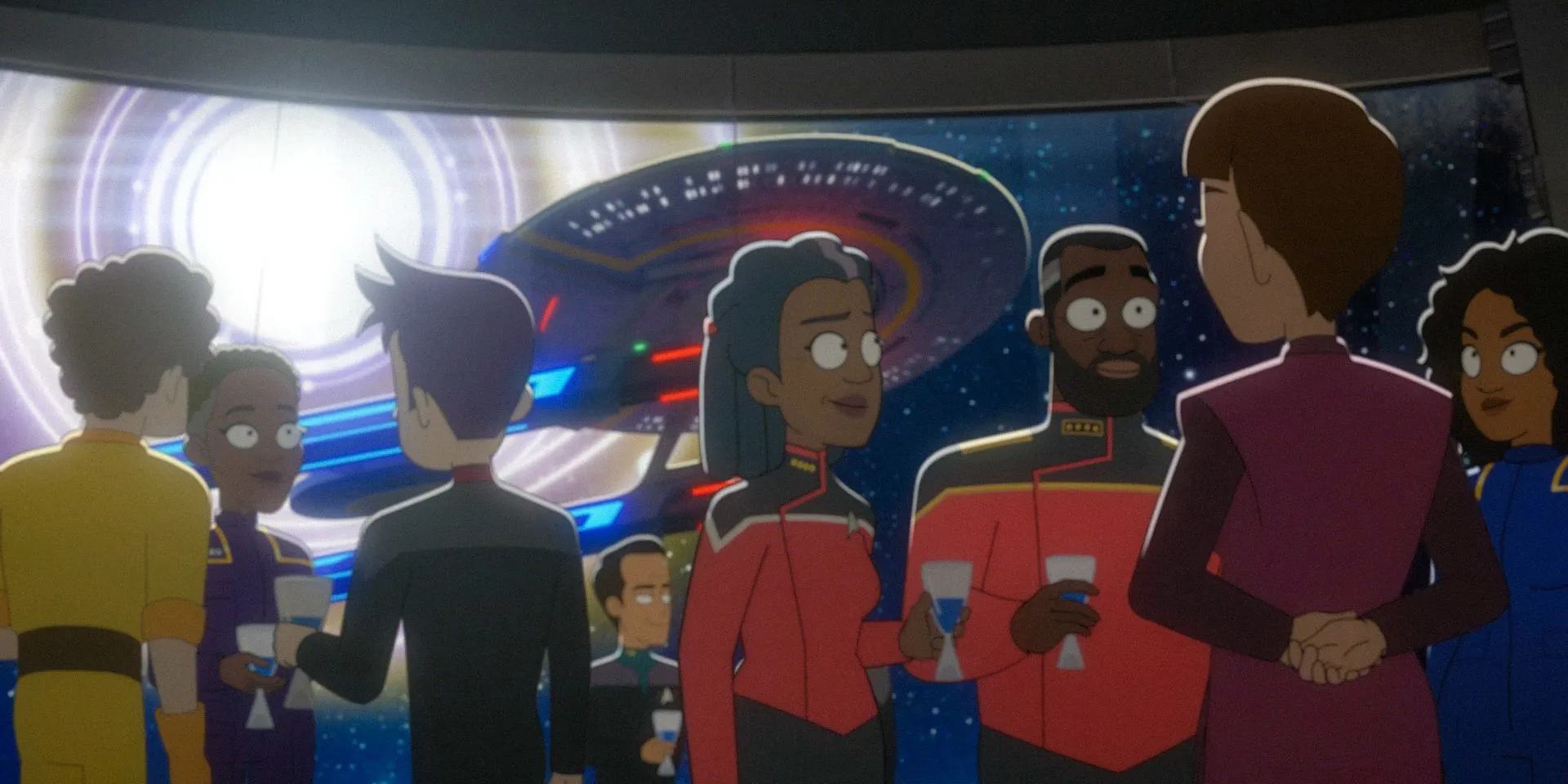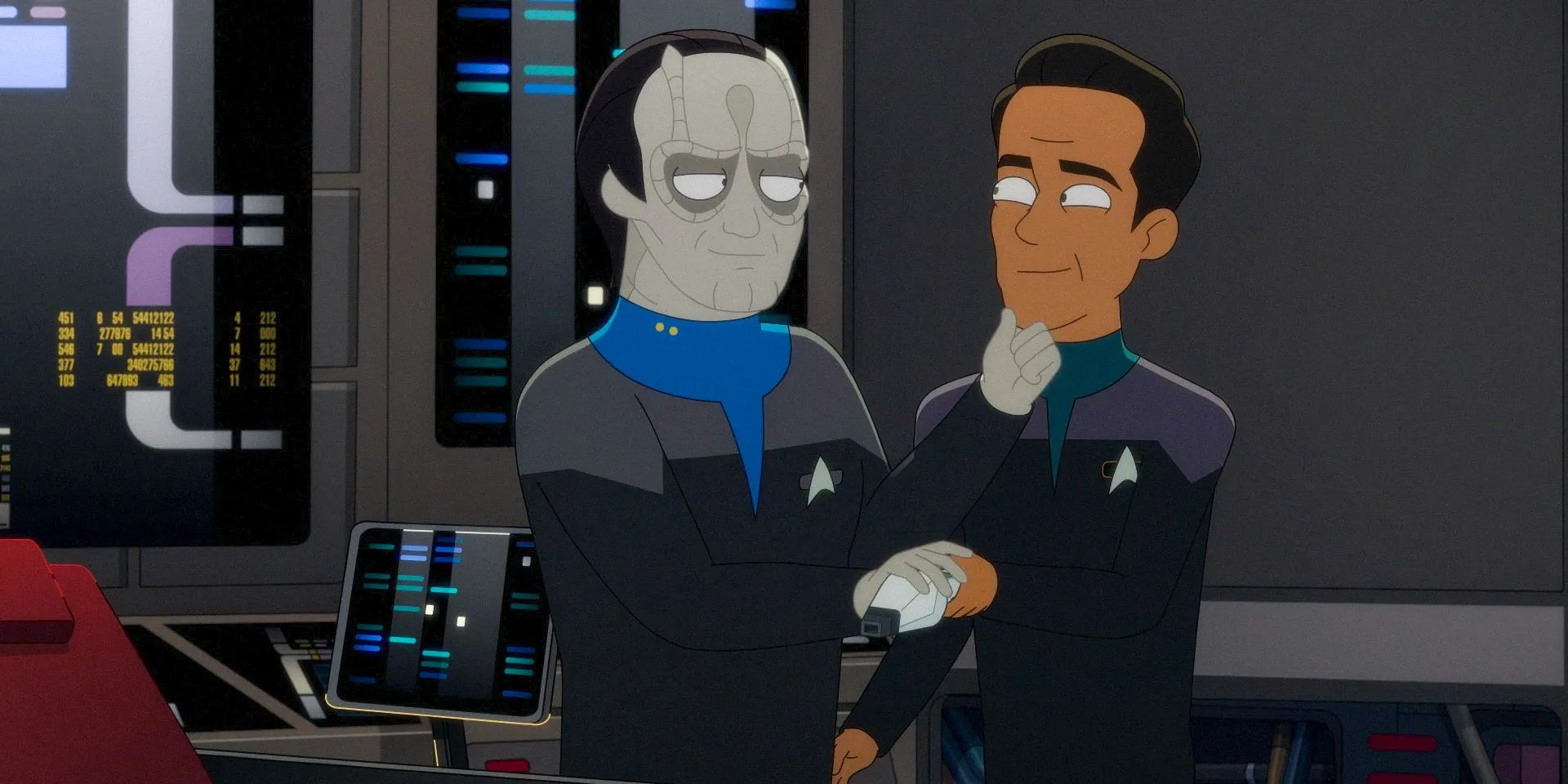
As Star Trek: Lower Decks wraps up its fifth and final season on Paramount+, it has ventured into the realm of the multiverse, drawing parallels with Marvel’s What If…?. In the season finale, Captain Carol Freeman, portrayed by Dawnn Lewis, alongside the USS Cerritos crew, plays a crucial role in safeguarding the integrity of Star Trek’s Prime Universe. They stabilize a colossal wormhole leading to various quantum realities, subsequently having Starfleet relocate Starbase 80 to this portal’s entrance and placing Captain Freeman in charge of exploratory missions.
Despite no immediate plans for spin-offs originating from Lower Decks, the introduction of a multiverse gateway opens exciting narrative possibilities. Star Trek boasts nearly 60 years of rich history, featuring a multitude of characters and storylines ripe for exploration. The inclusion of legacy characters like T’Pol and Curzon in the penultimate episode suggests that stories could unfold across different timelines and centuries, offering an expansive canvas for creative storytelling.
Why Star Trek Should Embrace Its Own Version of Marvel’s What If…?
Exploring the Multiverse: A Bold New Frontier





The finale of Star Trek: Lower Decks sets an ideal stage for a multiverse narrative comparable to Marvel’s What If…?. The framework could feature Captain Freeman directing missions through the wormhole or simply provide glimpses into diverse universes. Star Trek has already touched upon various realities, such as the Mirror Universe and the Kelvin Universe, with hints at many more. A What If…? styled series would enable the franchise to explore innovative universes and answer long-standing fan questions.
For instance, the episode titled “Fissure Quest”from season 5 presents Captain William Boimler and his team made up of classic Star Trek legacy figures. Within the crew of the Anaximander are Garak and an Emergency Medical Hologram of Dr. Bashir, exceptionally portrayed as a married couple. This narrative concept has long intrigued fans who have envisioned a romantic relationship between Garak and Bashir since the days of Star Trek: Deep Space Nine. A What If…? approach could comfortably explore these relationships and scenarios without conflicting with established lore.
The Case for an Animated Star Trek Multiverse Series
Star Trek’s Success in Animation





With its comedic and adventurous spirit, Star Trek: Lower Decks illustrates the franchise’s adeptness with the multiverse within an animated context. Animation permits the return of any Trek actors who wish to reprise their roles, irrespective of their current age, while also allowing new voice talents to fill the roles of characters whose original actors may have passed away. The animation quality demonstrated in Star Trek: Lower Decks and Star Trek: Prodigy showcases a commitment to stunning visuals. A multiverse series could further expand this creative expression, delivering unique and diverse storytelling experiences.
In conclusion, Star Trek: Lower Decks has undeniably broadened the horizon for the franchise’s future, encouraging the exploration of a multitude of untold stories across various timelines. Imagine episodes set in alternate realities, such as the purple universe introduced in season 5, or scenarios where iconic characters make different life choices, like Spock opting for the Vulcan Science Academy over Starfleet. With the innovative direction showcased in its series finale, Lower Decks has opened a vibrant new multiverse of possibilities for Star Trek.




Leave a Reply